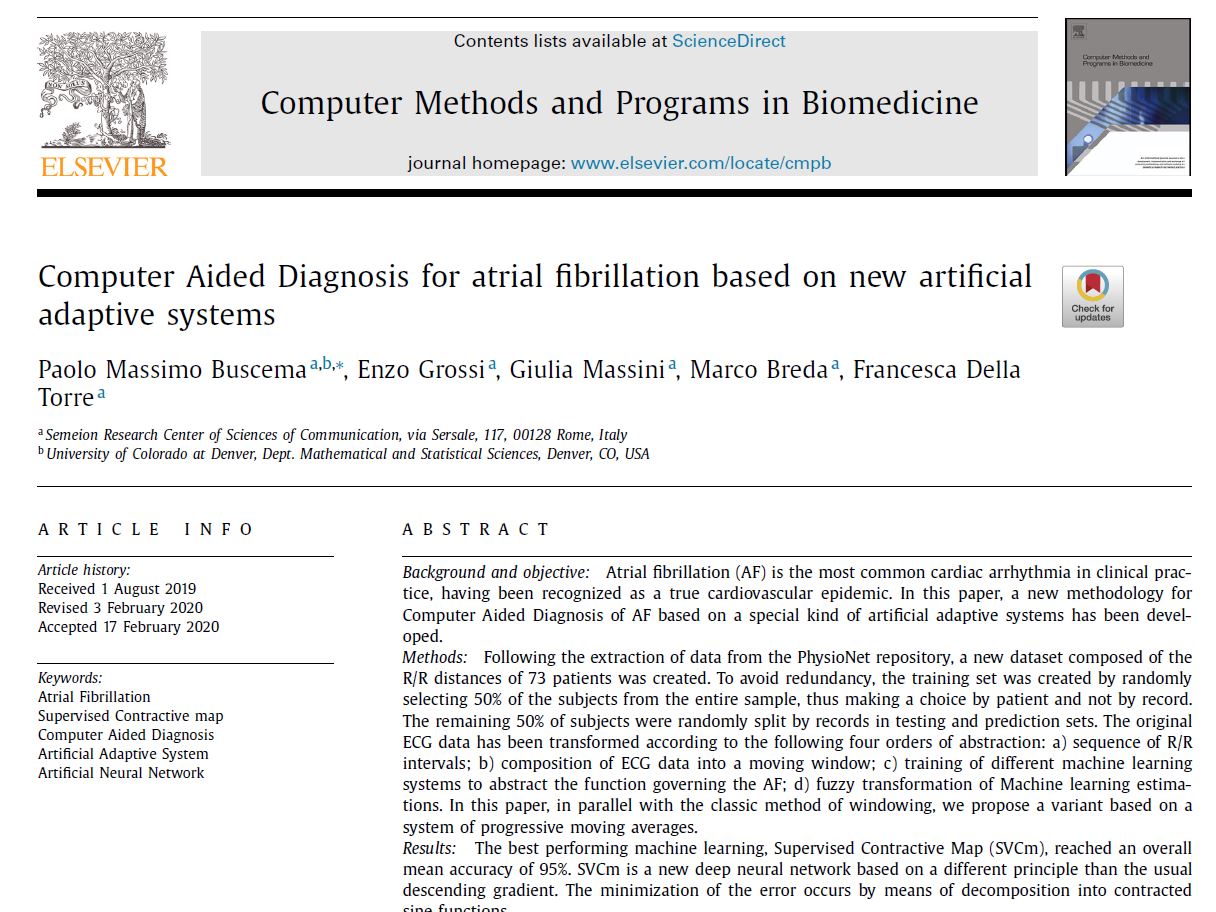 |
P.M.Buscema, E.Grossi, G.Massini, M.Breda, F. Della Torre Computer Aided Diagnosis for atrial fibrillation based on new artificial adaptive systems in Computer Methods and Programs in Biomedicine, Elsevir,Volume 191, July 2020, 105401, https://doi.org/10.1016/j.cmpb.2020.105401 |
Abstract
Background and objective: Atrial fibrillation (AF) is the most common cardiac arrhythmia in clinical prac- tice, having been recognized as a true cardiovascular epidemic. In this paper, a new methodology for Computer Aided Diagnosis of AF based on a special kind of artificial adaptive systems has been devel- oped. Methods: Following the extraction of data from the PhysioNet repository, a new dataset composed of the R/R distances of 73 patients was created. To avoid redundancy, the training set was created by randomly selecting 50% of the subjects from the entire sample, thus making a choice by patient and not by record. The remaining 50% of subjects were randomly split by records in testing and prediction sets. The original ECG data has been transformed according to the following four orders of abstraction: a) sequence of R/R intervals; b) composition of ECG data into a moving window; c) training of different machine learning systems to abstract the function governing the AF; d) fuzzy transformation of Machine learning estima- tions. In this paper, in parallel with the classic method of windowing, we propose a variant based on a system of progressive moving averages. Results: The best performing machine learning, Supervised Contractive Map (SVCm), reached an overall mean accuracy of 95%. SVCm is a new deep neural network based on a different principle than the usual descending gradient. The minimization of the error occurs by means of decomposition into contracted sine functions. Conclusions: In this research, atrial fibrillation is considered from a completely different point of view than classical methods. It is seen as the stable process, i.e. the function, that manages the irregularity of the irregularities of the R/R intervals. The idea, therefore, is to abstract from mere physiology to inves- tigate fibrillation as a mathematical object that handles irregularities. The attained results seem to open new perspectives for the use of potent artificial adaptive systems for the automatic detection of atrial fibrillation, with accuracy rates extremely promising for real world applications.
